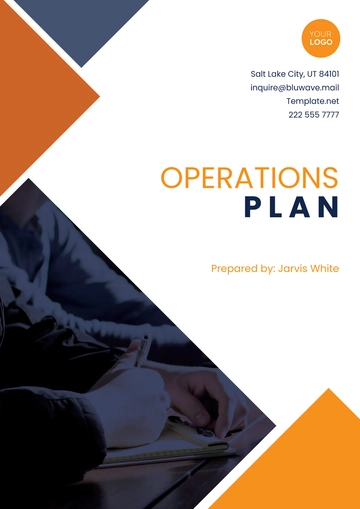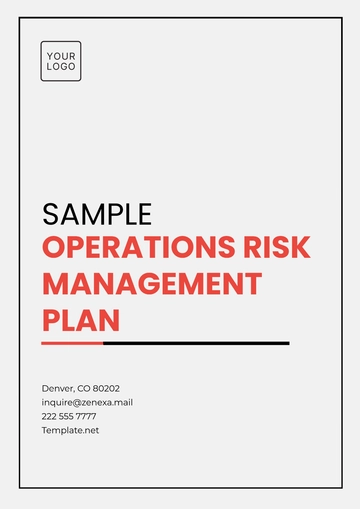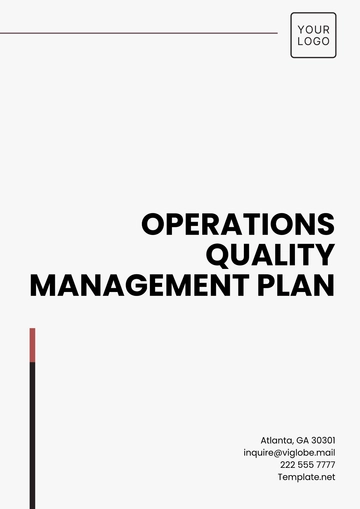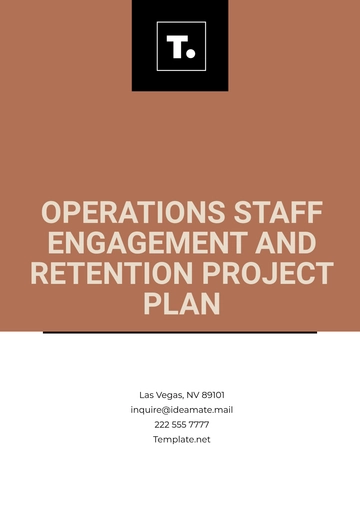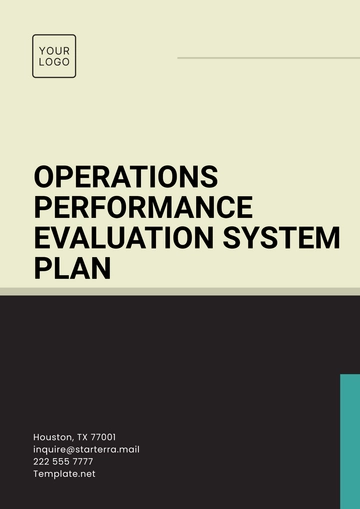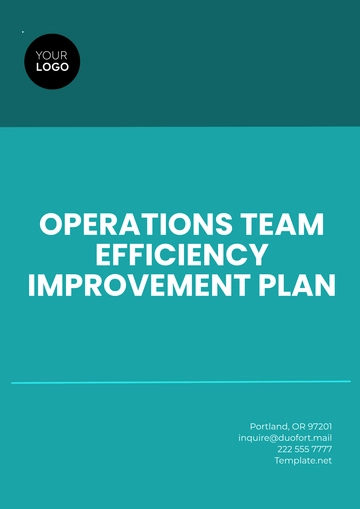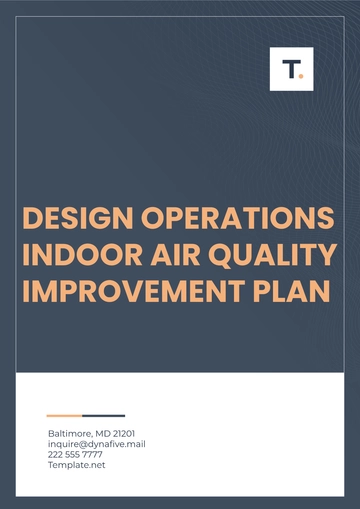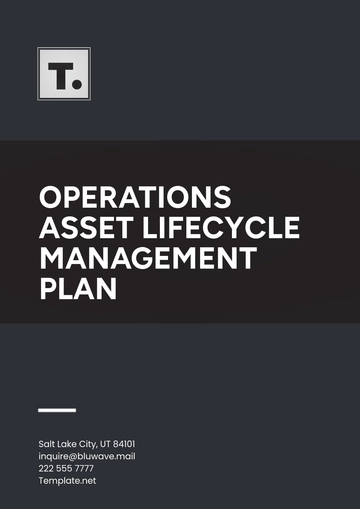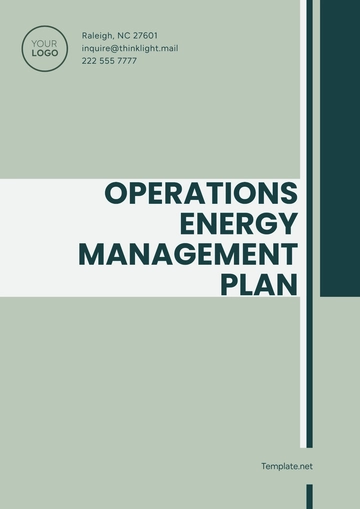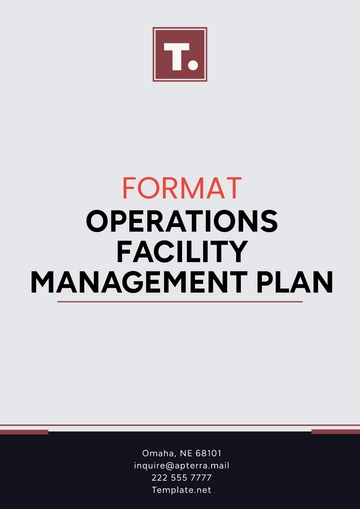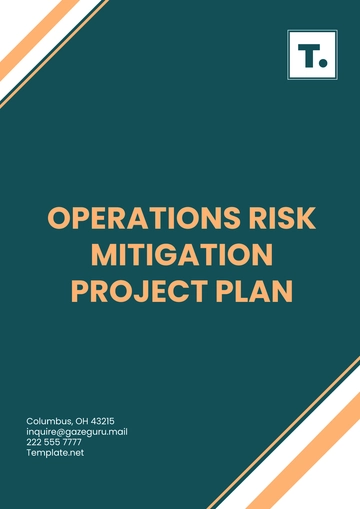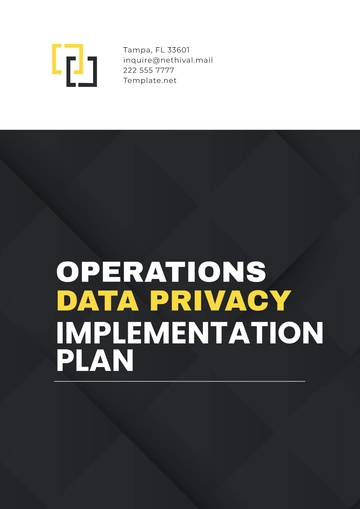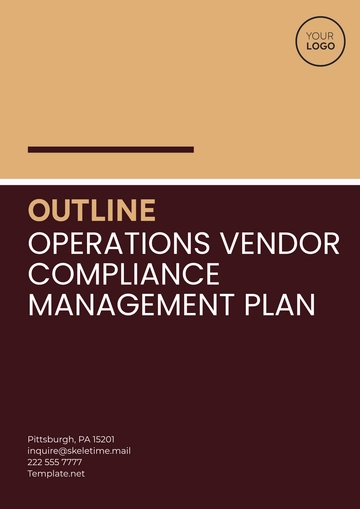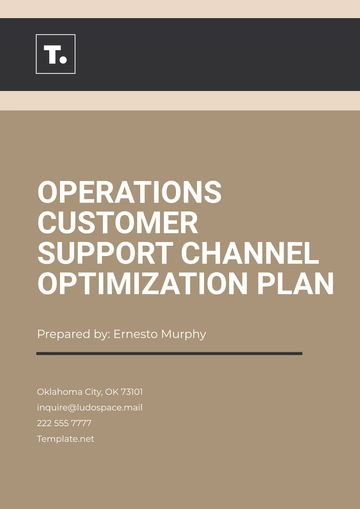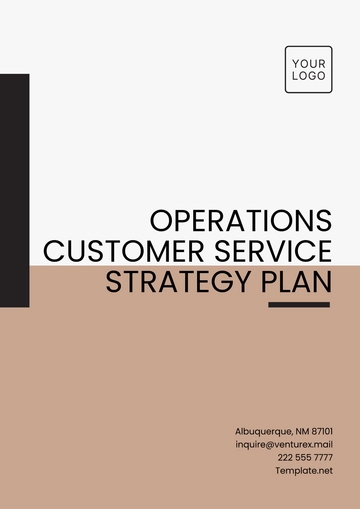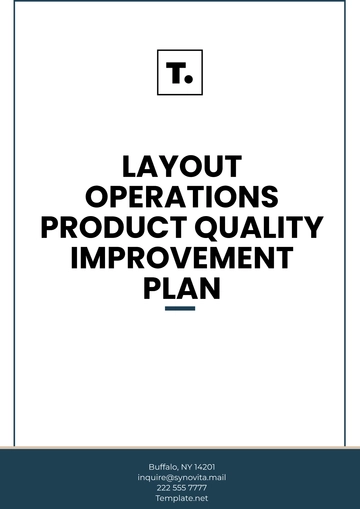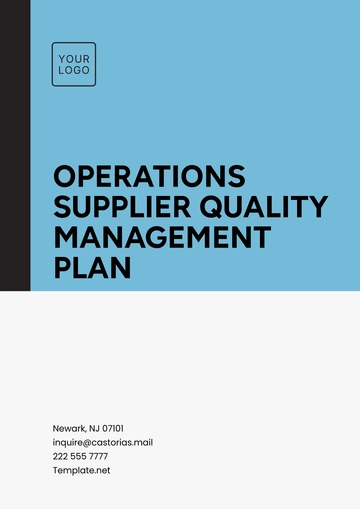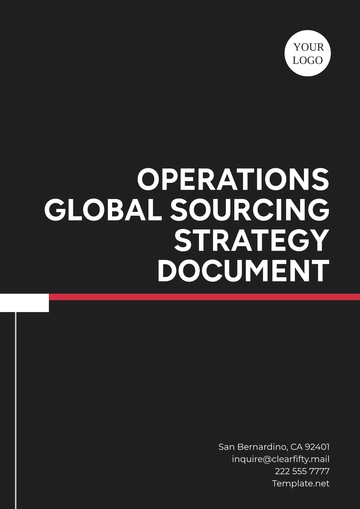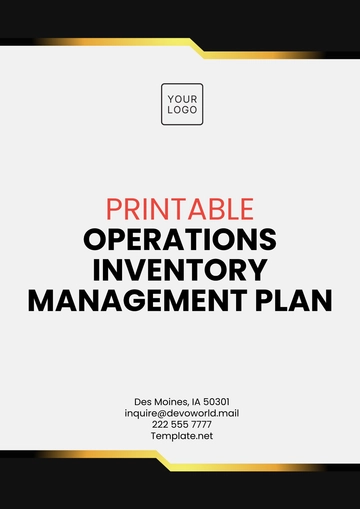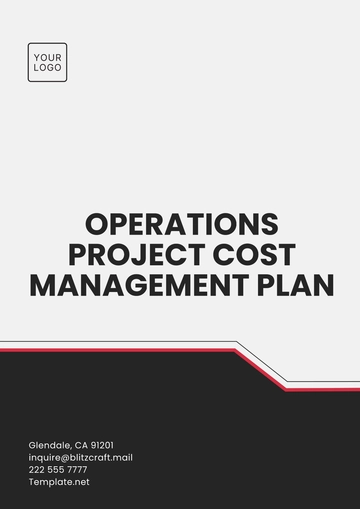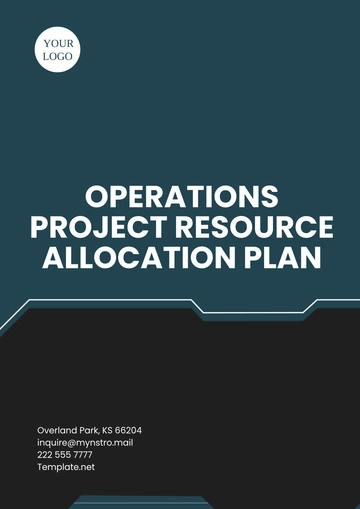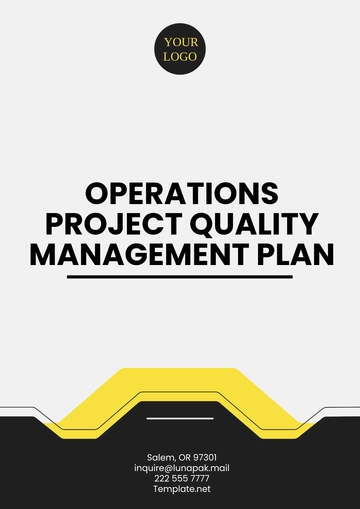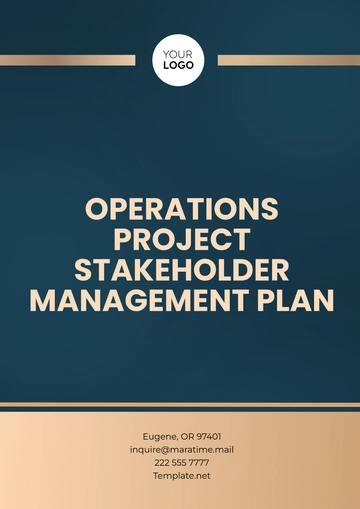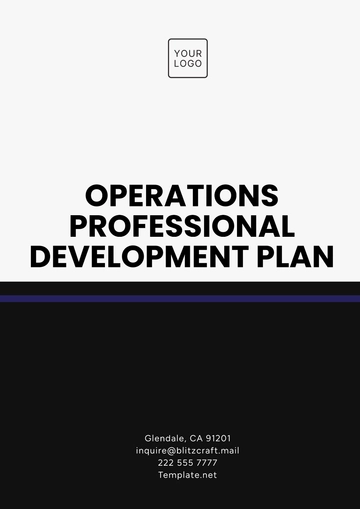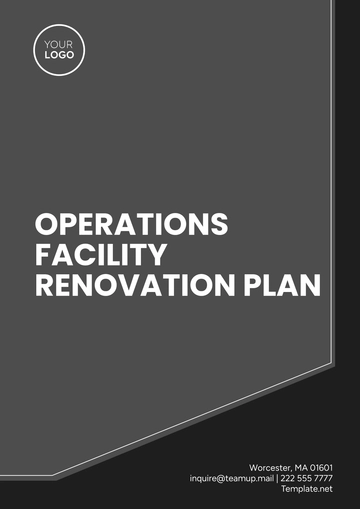Free Annual Department Operational Plan

Prepared by | Company | Department | Date |
|---|---|---|---|
[Your Name] | [Your Company Name] | [Your Department] | [Date] |
I. Mission and Objectives
A. Mission Statement
The Finance Department at [Your Company Name] is dedicated to optimizing financial performance and providing strategic insights to support the company's growth and profitability. We strive to maintain the highest standards of financial integrity while delivering value to our stakeholders.
Enhance Cash Flow Management: By optimizing working capital and minimizing cash conversion cycles, we aim to bolster liquidity and financial stability.
Implement Cost-Saving Measures: Through rigorous cost analysis and strategic initiatives, we seek to identify opportunities for cost reduction while maintaining operational effectiveness.
Strengthen Financial Reporting and Analysis Capabilities: We endeavor to enhance the accuracy and timeliness of financial reporting, empowering stakeholders with actionable insights for informed decision-making.
II. Key Performance Indicators (KPIs)
Cash Conversion Cycle: Targeting a reduction by 10% to improve liquidity.
Cost Reduction Percentage: Aiming for a 10% reduction in operating expenses to enhance profitability.
Accuracy of Financial Forecasts: Maintaining forecast accuracy within a 5% variance to support effective planning.
III. Strategies and Initiatives
A. Strategy 1: Enhance Cash Flow Management
Negotiate Extended Payment Terms: Collaborate with suppliers to negotiate longer payment terms, optimizing cash outflows without compromising supplier relationships.
Inventory Optimization: Implement inventory management strategies to reduce excess inventory levels and improve cash conversion efficiency.
B. Strategy 2: Cost Optimization
Comprehensive Cost Analysis: Conduct detailed cost analysis across departments to identify opportunities for cost reduction without sacrificing quality or service.
Streamline Procurement Processes: Review and streamline procurement processes to negotiate better terms with vendors and reduce purchasing costs.
IV. Resource Allocation
A. Budget Allocation:
Personnel: Allocate $750,000 for hiring additional financial analysts and professional development programs.
Technology: Invest $200,000 in financial management software to enhance reporting and analysis capabilities.
Training: Allocate $50,000 for training programs to upskill finance staff in financial modeling and data analysis.
B. Staffing Needs:
Hire 3 additional financial analysts to strengthen forecasting and analysis capabilities.
Provide specialized training programs to develop expertise in financial modeling and advanced data analytics.
C. Other Resources:
Invest in cloud-based accounting software to streamline financial processes and improve accuracy in reporting.
Subscribe to market intelligence platforms to gain insights into industry trends and competitor analysis.
V. Risk Management
A. Identification of Risks:
Economic Downturn: Economic indicators closely anticipate potential downturns in consumer spending.
Currency Exchange Rate Fluctuations: Foreign currency exposure to mitigate risks associated with fluctuating exchange rates.
B. Risk Mitigation Strategies:
Diversify Revenue Streams: New revenue streams to reduce dependency on specific product categories and markets.
Implement Hedging Strategies: Financial instruments to hedge against currency risks and minimize potential losses.
C. Contingency Plans:
Scenario Planning: Contingency plans for different economic scenarios to ensure agility and resilience in response to market changes.
Establish Reserve Funds: Reserve funds to mitigate the impact of unforeseen events on financial performance and maintain business continuity.
VI. Timeline and Milestones
Enhance Cash Flow Management:
Milestone 1: Extend payment terms with top 10 suppliers - Q1
Milestone 2: Implement inventory optimization strategies - Q2
Cost Optimization:
Milestone 1: Complete cost analysis and identify cost-saving opportunities - Q1
Milestone 2: Streamline procurement processes and negotiate better terms with vendors - Q3
VII. Monitoring and Evaluation
Monitoring Process: Conduct monthly financial reviews to track progress against KPIs and identify areas for improvement.
Evaluation Criteria: Review cash flow statements, cost reduction reports, and variance analysis against forecasts to assess performance.
Feedback Mechanisms: Facilitate regular feedback sessions with department heads and key stakeholders to gather insights and suggestions for improvement.
- 100% Customizable, free editor
- Access 1 Million+ Templates, photo’s & graphics
- Download or share as a template
- Click and replace photos, graphics, text, backgrounds
- Resize, crop, AI write & more
- Access advanced editor
Enhance and Discover the Annual Department Operational Plan Template from Template.net. This editable and customizable tool empowers your team to craft precise strategies. It is editable in our Ai Editor Tool and ensures effortless modifications for tailored plans. Elevate your department's efficiency with this comprehensive solution, designed for optimal performance.
You may also like
- Finance Plan
- Construction Plan
- Sales Plan
- Development Plan
- Career Plan
- Budget Plan
- HR Plan
- Education Plan
- Transition Plan
- Work Plan
- Training Plan
- Communication Plan
- Operation Plan
- Health And Safety Plan
- Strategy Plan
- Professional Development Plan
- Advertising Plan
- Risk Management Plan
- Restaurant Plan
- School Plan
- Nursing Home Patient Care Plan
- Nursing Care Plan
- Plan Event
- Startup Plan
- Social Media Plan
- Staffing Plan
- Annual Plan
- Content Plan
- Payment Plan
- Implementation Plan
- Hotel Plan
- Workout Plan
- Accounting Plan
- Campaign Plan
- Essay Plan
- 30 60 90 Day Plan
- Research Plan
- Recruitment Plan
- 90 Day Plan
- Quarterly Plan
- Emergency Plan
- 5 Year Plan
- Gym Plan
- Personal Plan
- IT and Software Plan
- Treatment Plan
- Real Estate Plan
- Law Firm Plan
- Healthcare Plan
- Improvement Plan
- Media Plan
- 5 Year Business Plan
- Learning Plan
- Marketing Campaign Plan
- Travel Agency Plan
- Cleaning Services Plan
- Interior Design Plan
- Performance Plan
- PR Plan
- Birth Plan
- Life Plan
- SEO Plan
- Disaster Recovery Plan
- Continuity Plan
- Launch Plan
- Legal Plan
- Behavior Plan
- Performance Improvement Plan
- Salon Plan
- Security Plan
- Security Management Plan
- Employee Development Plan
- Quality Plan
- Service Improvement Plan
- Growth Plan
- Incident Response Plan
- Basketball Plan
- Emergency Action Plan
- Product Launch Plan
- Spa Plan
- Employee Training Plan
- Data Analysis Plan
- Employee Action Plan
- Territory Plan
- Audit Plan
- Classroom Plan
- Activity Plan
- Parenting Plan
- Care Plan
- Project Execution Plan
- Exercise Plan
- Internship Plan
- Software Development Plan
- Continuous Improvement Plan
- Leave Plan
- 90 Day Sales Plan
- Advertising Agency Plan
- Employee Transition Plan
- Smart Action Plan
- Workplace Safety Plan
- Behavior Change Plan
- Contingency Plan
- Continuity of Operations Plan
- Health Plan
- Quality Control Plan
- Self Plan
- Sports Development Plan
- Change Management Plan
- Ecommerce Plan
- Personal Financial Plan
- Process Improvement Plan
- 30-60-90 Day Sales Plan
- Crisis Management Plan
- Engagement Plan
- Execution Plan
- Pandemic Plan
- Quality Assurance Plan
- Service Continuity Plan
- Agile Project Plan
- Fundraising Plan
- Job Transition Plan
- Asset Maintenance Plan
- Maintenance Plan
- Software Test Plan
- Staff Training and Development Plan
- 3 Year Plan
- Brand Activation Plan
- Release Plan
- Resource Plan
- Risk Mitigation Plan
- Teacher Plan
- 30 60 90 Day Plan for New Manager
- Food Safety Plan
- Food Truck Plan
- Hiring Plan
- Quality Management Plan
- Wellness Plan
- Behavior Intervention Plan
- Bonus Plan
- Investment Plan
- Maternity Leave Plan
- Pandemic Response Plan
- Succession Planning
- Coaching Plan
- Configuration Management Plan
- Remote Work Plan
- Self Care Plan
- Teaching Plan
- 100-Day Plan
- HACCP Plan
- Student Plan
- Sustainability Plan
- 30 60 90 Day Plan for Interview
- Access Plan
- Site Specific Safety Plan
